소개
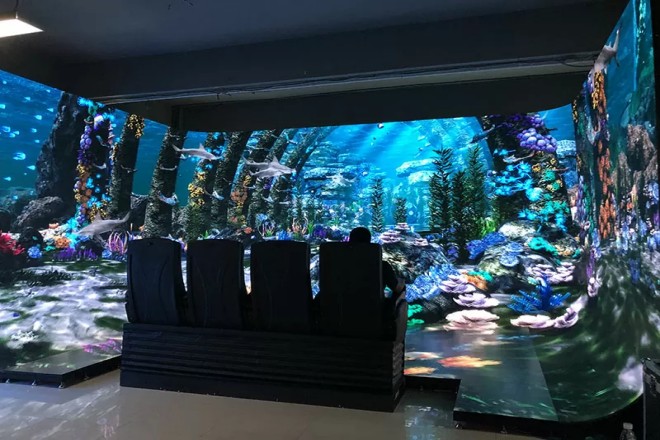
Entering a new era of future entertainment, LED 디스플레이 are leading the trend of change in immersive theme parks.
Imagine walking in a fantasy world of light and shadow, with every step triggering an amazing visual feast, as if traveling through time and space and experiencing the dream scenes in the movie. This is not just a fantasy in a science fiction movie but a realistic portrayal of the perfect fusion of LED display technology and immersive experience.
This article goes straight to the core and will reveal to you how LED displays reshape theme parks, from technical principles to creative designs, from successful cases to future trends, and fully demonstrate how this innovative combination can bring unprecedented immersive enjoyment to tourists.
1. Overview of immersive theme parks
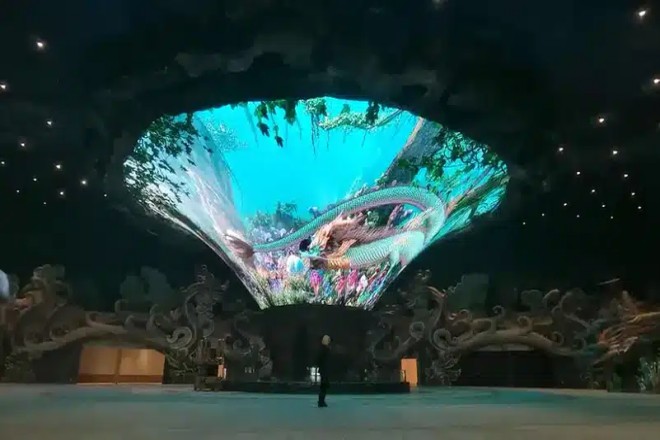
In short, an immersive theme park is an entertainment venue that completely wraps tourists in a specific theme world.
In this park, every detail – from the appearance of the building to the interior decoration, from the design of the rides to the clothing of the employees – revolves around a specific theme, making tourists seem to have traveled to another world.
1). The characteristics of immersive theme parks are mainly reflected in the following aspects:
Theme: The park is usually designed and laid out around one or more specific themes, such as fairy tale world, future technology, historical culture, etc. Each theme has its own unique storyline and background setting.
Immersion: The park creates a strong sense of immersion through high-tech means and multi-sensory experience, making visitors feel as if they are in a real theme environment.
Interactivity: Compared with traditional theme parks, immersive theme parks pay more attention to the participation and interaction of visitors. Visitors can deeply experience the theme story by completing tasks and interacting with characters.
Cultural: While displaying the theme, the park also incorporates rich cultural connotations, allowing visitors to feel the influence of culture while having fun.
2). The core elements of immersive experience: Multi-sensory integration such as vision, hearing, and touch
The core of immersive experience lies in the integration of multiple senses, that is, by stimulating the senses of vision, hearing, touch, etc. of visitors, a full-dimensional and three-dimensional experience is created.
Vision: Through technologies such as LED display, 3D projection, and holographic projection, realistic virtual scenes are created, making visitors feel as if they are in another world. These scenes are not only highly realistic but also dynamically change according to the actions and reactions of visitors.
Hearing: Use surround sound and stereo sound systems to create an immersive sound experience. Sound effects not only match the visual scenes but also guide visitors’ actions and emotions through changes in sound.
Touch: Through tactile feedback devices, somatosensory games, etc., visitors can touch objects in the virtual world and feel the real touch. This tactile feedback not only enhances the sense of immersion but also allows visitors to understand the theme story more deeply.
In addition, sensory elements such as smell (such as simulated flower fragrance, food aroma) and taste (such as special snacks, theme restaurants) are also used in some immersive experiences, further enhancing the immersion and participation of visitors.
2. In-depth application of LED display screens in immersive theme parks
1). Detailed explanation of technical foundations
1.1). The working principle of LED display screens:
LED display screens, in simple terms, are composed of countless light-emitting diodes (LEDs) arranged and combined. Each LED is a tiny light source, and various images and information can be displayed by controlling the on and off and color changes of these light sources.
These LEDs are packaged in specific modules or pixel units, and the images are displayed through driving circuits and control systems.
1.2). Technical parameters and their importance:
- 명쾌함:
Clarity determines the fineness of the image. The smaller the pixel pitch, the more pixels per unit area, and the clearer the image. In an immersive experience, high clarity ensures that the image is rich in detail, making visitors feel as if they are in a real scene.
Brightness determines the visibility of the display under different lighting conditions. Outdoors or in a bright light environment, a high-brightness display ensures that the image is clearly visible.
In an immersive experience, a high-brightness display ensures that visitors can enjoy a clear image even in strong light.
- 차이:
Contrast refers to the difference in brightness between the brightest and darkest parts of the display.
High contrast can provide richer color levels and more realistic image effects. In an immersive experience, high contrast can enhance the three-dimensionality and realism of the image, allowing visitors to experience a more realistic scene.
2). In-depth analysis of interactive experience design
- Implementation of walking interaction:
In an immersive theme park, LED displays can be combined with sensor technology to achieve walking interaction. When tourists walk by, the sensor will capture the tourists’ footsteps and trigger the corresponding animation effects.
For example, in the scene simulating the underwater world, when tourists walk by, the LED display screen under their feet will present a sparkling sea effect, as if they are really walking on the seabed. This interactive experience not only increases the tourists’ sense of participation but also enhances the fun of the entire scene.
- Combination of embedded ground LED screen and sensor animation:
Embedded ground LED screen is a technology that embeds LED display screens into the ground. By combining with sensor technology, richer interactive effects can be achieved.
For example, in the scene simulating forest adventure, when tourists step on the LED screen on the ground, the screen will present animation effects such as falling leaves and flowing streams, as if they are really in the forest.
This combination not only provides visual enjoyment but also increases the tourists’ sense of immersion and participation.
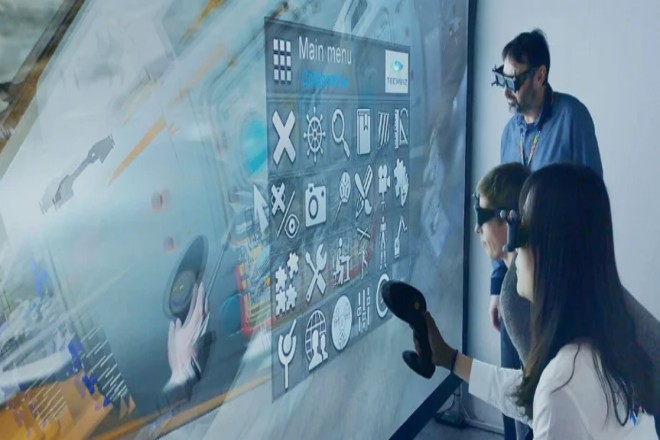
- Combination of virtual reality (VR) and LED curtain wall:
Virtual reality (VR) technology is a technology that can simulate a real environment. Combining VR technology with LED curtain walls can create a more realistic, immersive experience. After wearing VR equipment, tourists can be in an environment with LED curtain walls.
LED curtain walls can display the background and environment in VR scenes, while VR devices provide an immersive experience from a first-person perspective.
For example, in a simulated flight experience, LED curtain walls can display various scenes during the flight, such as clouds, mountains, cities, etc., while VR devices provide various operational senses and realism during the flight. This combination not only provides visual enjoyment but also increases the immersion and realism of visitors.
- 360-degree surround LED screen design:
The 360-degree surround LED screen is a form of display screen that can display content in all directions. It can enclose the entire amusement facility or exhibition hall to form an audio-visual experience space without dead ends.
This design not only allows visitors from every angle to enjoy the content but also enhances the sense of immersion and realism. For example, in a simulated space capsule scene, the 360-degree surround LED screen can display various scenes in space and the trajectory of celestial bodies, making visitors feel as if they are in a real space environment.
At the same time, a more realistic space atmosphere can be created through the coordination of sound and light.
3). In-depth exploration of creative design
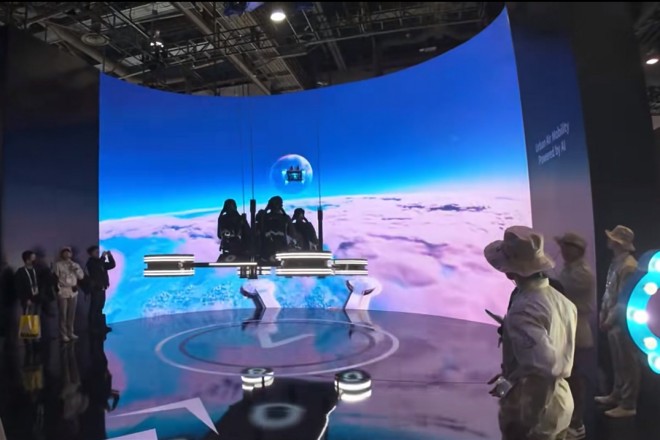
- Deformable display of flexible LED screen:
A flexible LED screen is a form of display screen that can be bent and deformed. It can change shape according to the needs of the pavilion or amusement facilities, such as wave shape, globe shape, flower shape, etc.
This deformable display not only increases the fun and playability of the pavilion or amusement facilities but also highlights the characteristics and themes of the exhibits.
For example, in the scene simulating the ocean world, a flexible LED screen can be used to simulate the ups and downs and fluctuations of the waves; in the scene simulating the future science and technology city, a flexible LED screen can be used to simulate the form and change effect of future buildings.
- Combination of laser projection and LED screen:
Laser projection technology is a technology that can project high-quality images. Combining laser projection technology with LED screens can create richer visual effects and interactive experiences.
For example, in scenes that simulate concerts or concerts, laser projection technology can be used to project elements such as notes and scores on the LED screen, and gesture recognition and other technologies can be used to allow visitors to interact with the screen.
This combination not only provides visual enjoyment but also increases the participation and interactivity of visitors.
- Application of foldable LED screen:
A foldable LED screen is a form of display screen that can be folded and unfolded. It can be flexibly unfolded and folded according to the needs of different exhibition areas, and the display content can be changed.
This design is not only convenient for layout and transportation but also can quickly change the display content during the exhibition, increasing the viewing experience of visitors. For example, in the scene simulating the long river of history, the folding LED screen can be used to display events and characters in different historical periodsn.
Ithe scene simulating the future science and technology city, the folding LED screen can be used to display the planning and construction of the future city.
4). In-depth analysis of spherical LED screens to create immersive space
- Technology selection and content creation:
Spherical LED screens are a special form of display screen that can provide a full range of visual experiences. In terms of technology selection, it is necessary to consider parameters such as screen resolution, brightness, contrast, and drive and control methods.
At the same time, it is also necessary to design and produce 360-degree videos and customized content according to the characteristics of the spherical screen. These contents can include various scene simulations, role-playing, interactive games, etc., to enrich the viewing experience of visitors.
- Production of 360-degree videos and customized content:
In order to make full use of the characteristics of the spherical LED screen, 360-degree videos, and customized content need to be produced.
These videos and content need to take into account the all-round perspective and three-dimensional sense of the spherical screen to ensure that visitors can get the best visual experience when watching.
During the production process, it is necessary to pay attention to parameters such as video resolution and frame rate, as well as the coherence and fun of the content, in order to attract the attention and interest of tourists.
- Interactive design and audience participation enhancement:
The interactive design of the spherical LED screen needs to consider the audience’s operation mode and feedback mechanism.
For example, a variety of operation modes, such as touch screen, voice recognition, gesture recognition, etc., can be designed to allow the audience to interact with the screen, and the audience’s immersion and participation can be enhanced through feedback mechanisms such as sound and light.
At the same time, some interactive games or challenge tasks can also be set up to allow the audience to get a richer experience and sense of achievement during the participation process.
- Coordination of lighting and sound systems:
In order to create a more realistic immersive space effect, the coordination of lighting and sound systems is required.
The lighting system can change parameters such as color and brightness according to the content on the screen to create a corresponding atmosphere; the sound system can play the corresponding audio content according to the sound effects on the screen to enhance the auditory experience.
Through the coordination of lighting and sound systems, a stereo effect can be created, and the realism and attractiveness of the entire immersive space can be enhanced.
This cooperation not only increases the immersion and sense of reality of tourists but also enhances the viewing value and attractiveness of the entire amusement facility or pavilion.
3. Successful case sharing: A model of immersive theme park
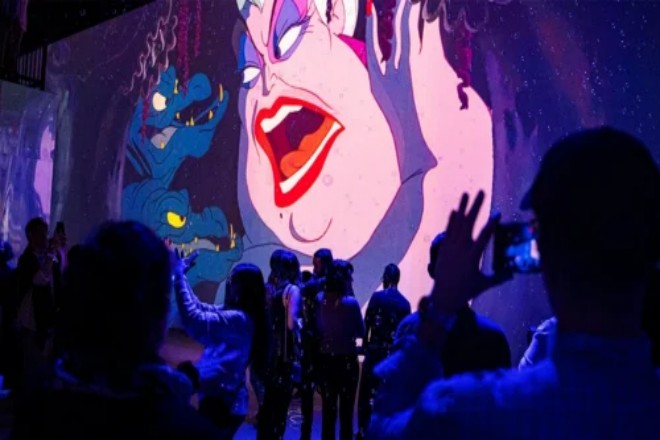
1). Shanghai Disneyland
1.1). Highlights of LED display application:
- Scene creation:
In Shanghai Disneyland, LED display screens are widely used in scene creation.
From the dazzling night view of the castle to the atmosphere lighting of each theme area, the LED display screen creates one dreamy scene after another for tourists with its high brightness, high contrast, and rich color expression.
- 대화형 경험:
The interactive games and performance projects in the park also make full use of LED display technology.
For example, in some amusement projects, the LED display screen serves as a background or interactive interface, interacting with the movements and expressions of tourists in real-time, enhancing the tourists’ sense of participation and experience.
1.2). Learning points:
- 기술 혁신:
Shanghai Disneyland has closely integrated LED display technology with the theme and scene design of the park through continuous technological innovation, bringing tourists an unprecedented immersive experience.
- Detail control:
The park has put a lot of effort into the selection, layout, and debugging of LED display screens to ensure that every detail can be perfectly presented, creating a coherent and real immersive world for tourists.
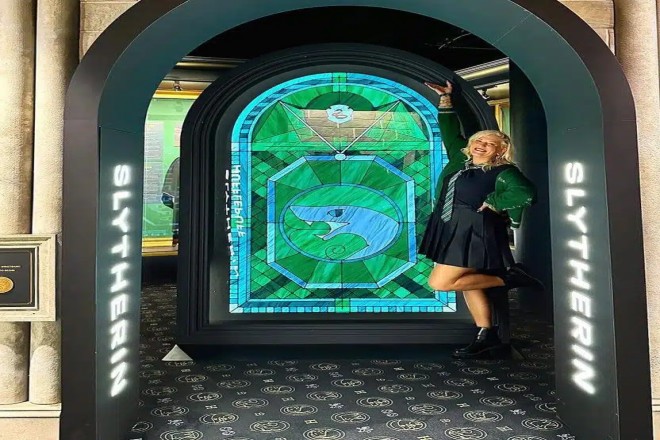
2). Universal Studios Japan
2.1). Highlights of LED display screen application:
- High-tech integration:
In the “Harry Potter’s Magical World” theme area, LED display screens are combined with high-tech means such as AR and VR to provide tourists with a more realistic and shocking immersive experience.
For example, when tourists visit Hogwarts Castle, the night sky and starlight simulated by the LED display screen are combined with AR technology to make tourists feel as if they are in a real magic world.
- 정서적 공명:
The park stimulates the emotional resonance of tourists through the classic characters and scenes displayed by the LED display screen. For example, in the flying broom flying project, the flight scene and background music simulated by the LED display screen make tourists feel as if they are really flying in the magic world.
2.2). Learning points:
- Multi-dimensional integration:
Universal Studios Japan USJ creates a more three-dimensional and rich immersive experience for tourists through the integration of LED display screens and various high-tech means.
- Emotional connection:
The classic characters and scenes displayed by the park through the LED display not only satisfy the visitors visually but also resonate with the characters emotionally, enhancing the loyalty and satisfaction of visitors.
결론
In summary, as one of the core technologies of immersive theme parks, LED display screens not only greatly enrich the visual experience of visitors but also bring unprecedented attraction and competitiveness to the park through its high interactivity and customized content.
With the continuous advancement of technology and the continuous deepening of creative design, the application of LED display screens in immersive experiences will be more extensive, from a single visual display to a full-scale experience of multi-sensory integration.
Every technological leap is a broadening of the boundaries of immersive entertainment.
마지막으로 LED 디스플레이 화면에 대해 더 알고 싶다면, 우리에게 연락해주세요.
